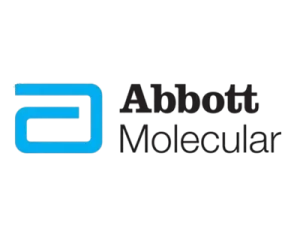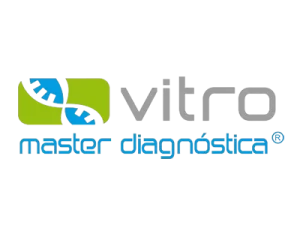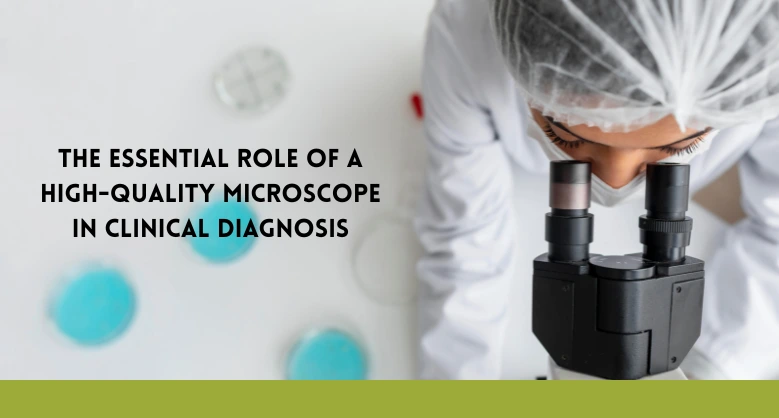DSS: Redefining Biotechnology & Life Science in India
- About Us
- Products & Services
PRODUCTS & SERVICES
- Applications & Specialities
All Applications & Specialities
- Brands
- Contact Us
-

-
 0
0
- ☰
- About Us
- Products & Services
- Applications & Specialities
- Brands
- Brand - Life Sciences
- 3i
- ABBERIOR INSTRUMENTS
- Abbott Molecular
- ADS Biotec
- APPLIED SPECTRAL IMAGING
- BioAir Tecnilabo
- DAKO (AGILENT)
- Eden Tech
- Elveflow
- ENTROGEN
- EUROCLONE
- EVIDENT
- Genea
- Hamamatsu Photonics
- Invivoscribe
- MASTER DIAGNOSTICA
- MBF BIOSCIENCE
- Medical Tek Co. Ltd
- MILESTONE MED SRL
- Molecular Machines & Industries
- MRC HOLLAND
- NeoDx
- Onward Assist
- Profound
- SCIENTIFICA
- µCyte
- Seqlo
- Brand - Industrial
- Brand - Life Sciences
- News & Events
- Career
- Contact Us
- Testimonial
- Blogs
- R&D
- CSR

Ovarian Cancer – A Better Understanding
BY Sohini Chatterjee August 27, 2021
“If a woman is screened and diagnosed for Ovarian Cancer at an early stage, her likelihood of survival due to ovarian cancer for five years or more doubles from merely 46 percent to more than 90 percent”
The month of September is Ovarian Cancer Awareness Month and a ‘teal ribbon’ represents Ovarian Cancer. Ovarian cancer is one of the principal causes of cancer-related deaths in females for which there is no certain screening test and primarily because ovarian cancer often has no early symptoms. Most women are screened once cancer has already increased and multiplied in the body, making it more complex to treat. Ovarian cancer is not a single disease; instead, it has a subset of a large number of diverse types of cancer that affect the ovaries, fallopian tubes and the primary peritoneal cavity. Ovarian cancer is the most lethal of the female cancers for which there is no reliable screening test, and every woman can be at risk at a point in time. With delays in diagnosis and because symptoms are often confused with other less severe diseases, most women are diagnosed once cancer has already spread, and therefore making it more difficult to treat.
Why is ‘Teal’ the Color of Ovarian Cancer?
The colour Teal is vibrant in the colour wheel. Ovarian cancer symptoms being often vague and dismissed for other diseases, the colour Teal is designated to represent ovarian cancer awareness to remind us of the early symptoms of cancer and that they cannot be ignored. A similar color combination is used to depict Cervical Cancer, but while ‘Teal’ is for Ovarian Cancer; ‘Teal & White’ is for Cervical Cancer. Both Ovarian Cancer and Cervical Cancer are causes of concern for women’s health.
Overview of Ovarian Cancer
Ovarian cancer is an uncontrolled division of abnormal cells within the ovary, the egg-producing reproductive organ of a female. The ovaries are organs of the female reproductive system that make female hormones and store egg cells released once in 30 days by ovulation. There are two ovaries located on each side of the uterus. Fallopian tubes, which are hollow organs, deliver the egg cells from the ovaries to the uterus. Ovarian tumours arise from the epithelium or lining cells of the ovary. They are Epithelial Ovarian Cancer (EOC) which arises from the surface cells of the ovary, fallopian tube cancers and primary peritoneal cancers (the abdomen lining inside that coats many abdominal structures). Other less common forms of ovarian cancer include germ cell ovarian cancer and sex cord-stromal ovarian cancer.
Causes of ovarian cancer
Parameters that may increase a woman’s risk of having ovarian cancer are:
- A woman above the age of 50
- A family history of inheritance of ovarian or breast cancer
- Hormone Replacement Therapy (HRT)
- Endometriosis – a condition where tissue that behaves like the lining of the womb is found outside the womb
- Obesity
- Smoking
- Lack of exercises
- Exposure to asbestos
Types of Ovarian Cancer
- ·Epithelial Ovarian Cancers (EOC) or ovarian carcinoma: The major type (85%-90%) of all ovarian cancers that include ovarian, fallopian tube, and primary peritoneal (lining tissues of the pelvis and abdomen). This type of Ovarian Cancer arises due to changes in DNA in cells that lead to the advance of cancer. The cell types that cause epithelial ovarian cancer are serous, mucinous, clear cell, and endometrioid.
- Ovarian Low Malignant Potential Tumor (OLMPT): It is formerly referred to as borderline ovarian cancers that account for about 15% of EOC, consisting of serous or mucinous types of cells. These types of tumours grow into large masses and cause symptoms in patients but do not always metastasize. Patients with advanced stages of OLMPT can be cured by the removal of the tumour.
- Germ Cell Tumors or germ cell ovarian cancer: Germ cell ovarian cancers are uncommon that arise from the reproductive cells of the ovary and are commonly seen in teens or young women. Germ Cell Tumors include different categories such as dysgerminomas, yolk sac tumours, embryonal carcinomas, polyembryomas, non-gestational choriocarcinomas, immature teratomas and mixed germ cell tumours.
- Sex Cord-Stromal Tumors: Sex cord-stromal tumours are uncommon just like the Germ Cell Tumors. These types of cancers come from a variety of cells within the ovary and include granulosa-stromal tumours (granulosa cell tumour ovary) and Sertoli-Leydig cell tumours.
Symptoms & Signs of Ovarian Cancer
Early stages of ovarian cancer do not generally cause any symptoms, but sometimes they may be nonspecific and vague for example:
- Abdominal enlargement or swelling
- Abdominal fullness
- Early satiety
- Bowel or bladder habit changes
- Clothes not fitting well.
- Fatigue
- Abdominal pain
- Shortness of breath
There are other symptoms too for example shortness of breath, leg swelling, and pain in the abdomen or pelvis. All these early symptoms of ovarian cancers can be very subtle and indistinct which makes diagnosis much more difficult.
Risk Factors
Risk factors are categorized into two major areas: menstrual cycles (ovulation) and family history.
- Ovulation: Chances of a woman having ovarian cancer increase with the number of times she ovulates in her lifetime. A woman who has her periods started (Menarche) at an early age, has it ended at a later age (menopause) and has never conceived (nulliparity) are at a much higher risk of having ovarian cancer.
- Family Cancer Syndromes: All patients with ovarian cancer must undergo testing for BRCA1 and BRCA2 mutations, which have been identified with hereditary cancer risk. These mutations are prevalent in both females and males. The siblings or children of a positively tested patient are at risk and are recommended for testing for this gene. BRCA1 and BRCA2 are associated with a woman’s risk of breast cancer. Women with BRCA1 and BRCA2 genetic mutations have a 35%-70% (BRCA1) or 10%-30% (BRCA2) probability of developing ovarian cancer in their lifetime. Less common conditions like Lynch syndrome (colon and uterine cancer), Li-Fraumeni syndrome and Cowden’s syndrome are associated with increased risk of ovarian cancer.
Ovarian cancer staging
It is the process to classify a tumour based on the extent to which it has multiplied in the body at the time of diagnosis.
- Stage 1: Affecting either one or both ovaries
- Stage 2: Affecting the pelvis
- Stage 3: Disease outside of the pelvis, but limited to the involvement of the abdomen or lymph node, but not including the interior of the liver
- Stage 4: Spread of the disease to the liver or outside of the abdomen
The staging of ovarian cancer is determined surgically. In the case of Stage 4 and a very advanced stage of Stage 3 ovarian cancer, a biopsy is performed followed by chemotherapy.
Tests for Diagnosis
Clinical diagnosis of ovarian cancer includes examinations, imaging and laboratory tests.
- Pelvic or abdominal ultrasound and CT scans: In a pelvic exam detection of an abnormal mass or lump in the pelvis is performed and ultrasound of the abdomen detects fluid in the abdominal cavity (ascites) or obstructions of the bowels or kidneys. CT scans are done to check for disease in the chest or liver.
- CA-125: a blood test that is often done on postmenopausal women, who are having a mass. An elevated CA-125 level, in this case, makes them fall at extreme risk of developing cancer. This test should only be done on patients who harbour a mass and are referred to by their clinician after preliminary diagnosis.
- HE4: a blood test to monitor patients with ovarian cancer for recurrence of the disease. It is used in the U.S.
- OVA-1, ROMA and Overa: blood tests utilized to aid doctors in the determination of the likelihood that an identified, suspicious mass can be cancerous when a mass is detected.
Treatment
- Surgical treatment– Surgery for ovarian cancer is used for the determination of the extent to which cancer cells have multiplied in the body (staging) and also for the removal of the tumour as much as possible (debulking) that might include fallopian tubes and ovaries (salpingo-oophorectomy), the uterus (hysterectomy), removal of the omentum (omentectomy – a large fat pad in the colon), biopsies of lymph node and any other organ involved in ovarian cancer.
- Chemotherapy- There are two ways to give chemotherapy to ovarian cancer patients. Traditionally, it is given into the vein intravenously (IV) and the other way is to place it directly into the abdomen (intraperitoneal or IP). The chemotherapy drugs that are used in ovarian cancer have lesser side effects and therefore their level of acceptance is easily tolerated than many other chemotherapy drugs. Patients healthy and capable of taking these drugs will highly benefit from their use.
- Targeted therapy– It is a type of treatment that uses drugs to identify specific cancer cells and treat them without posing any harm to healthy, normal cells of the body. A monoclonal antibody called Bevacizumab (Avastin) is used in the cure of advanced ovarian cancer that targets the development of blood vessels by a tumour. Other targeted therapy includes PARP inhibitors of ovarian cancers known as poly (ADP-ribose) polymerase inhibitors that block DNA repair enzymes causing cell apoptosis.
Five Quick Facts about Ovarian Cancer
- A Pap smear test (cervical smear test) is not used to detect ovarian cancer
- Ovarian cancer is diagnosed at an advanced stage most of the time
- Diagnosing ovarian cancer before it multiplies makes it much more convenient to treat
- Awareness towards ovarian cancer symptoms might lead to early diagnosis
- Common symptoms include persistent bloating, difficulty eating, feeling full quickly, pelvic/abdominal pain, urinary symptoms
Role of DSS in Ovarian Cancer
Abbott Molecular provides Vysis FISH (Fluorescent In Situ Hybridization) probes and Agilent (Dako) & Vitro (Master Diagnostica) provide IHC (immunohistochemistry) antibodies like CA125, CEA, CA19.0, Inhibin, AFP, etc.
EntroGen provides kits such asPIK3CA Mutation Analysis Kit for Real-Time PCR, BRCA Complete Expanded Panel and NGS Targeted Hotspot Panel for the study and detection of ovarian cancer.
- EntroGen’s PIK3CA mutation analysis test kit is a PCR based assay that identifies the presence of the PIK3CA gene somatic mutations using allele-specific primers and utilized in the pathogenesis of ovarian cancer along with other cancers including breast cancer, endometrial cancer, colon cancer, gliomas, gastric cancer and lung cancer.
- Based on next-generation sequencing (NGS), EntroGen’s BRCA Complete Expanded Panel is an assay used for the detection of BRCA1 and BRCA2 mutations along with comprehensive coverage of CHEK2, PALB2, RAD51C and TP53 genes.
- EntroGen’s NGS Targeted Hotspot Panel utilizes a robust next-generation sequencing (NGS) platform for identification and detection of clinically relevant hotspot mutations in solid tumours that includes the PIK3CA and TP53 gene.
MRC Holland provides SALSA MLPA reagents and MLPA probes for ovarian cancer syndrome for the analysis of copy number variation. Some of these MLPA probes are P002, P090, P260, P489, P045, P239 and many more. Mutations in the BRCA1 and BRCA2 genes account for around 15% of ovarian cancers overall.
Moreover, now MRC Holland also provides digital LPA products based on Illumina(R) platforms – D001 Hereditary Cancer Panel 1 for many target genes including the gene impacting ovarian cancer.
All of the above assays for detecting and diagnosing ovarian cancer are promoted by DSS Imagetech in India.
In addition, we also provide brightfield and fluorescent microscopes from Olympus which can aid in IHC and FISH as well as image analysis software from ASI (Applied Spectral Imaging).
Latest Articles
The Essential Role of a High-Quality Microscope in Clinical Diagnosis
BY DSS Imagetech Pvt Ltd August 1, 2025
Microscopy has long been an indispensable tool in clinical diagnosis, enabling visualization of cells, tissues, and microorganisms that cannot be seen with the naked eye. The accuracy and reliability of diagnostic outcomes often depend on the quality of the microscope used. A high-quality microscope ensures superior image clarity, resolution, contrast,...
Read MoreTop Biotechnology Products Revolutionizing Modern Science
BY DSS Imagetech Pvt Ltd July 29, 2025
Biotechnology products are changing our world in ways we could barely imagine just a few years ago. From the lab to the field, these innovations are helping us solve some of our biggest challenges in healthcare, agriculture, and environmental protection. Biotech is growing rapidly, with companies worldwide creating breakthrough solutions...
Read MoreHow Medical Equipment Distributors are Shaping the Healthcare Supply Chain
BY DSS Imagetech Pvt Ltd June 27, 2025
Medical equipment distributors play a crucial role in our healthcare system, serving as the backbone of an increasingly complex supply chain. In fact, distributors sell over 90% of all prescription drugs, making them essential intermediaries between manufacturers and healthcare providers. When we look at the broader picture, the United States...
Read More


























